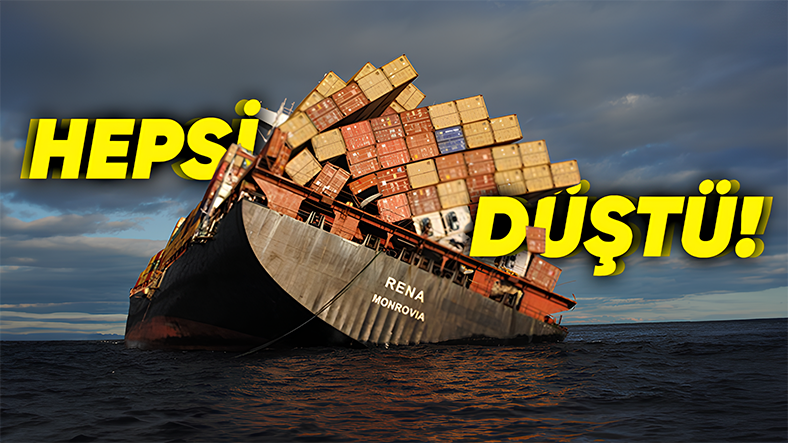Some of the most gruesome shipwrecks in history, modern technology and despite the development of security measures, it remains fresh in our memories.
Well, these accidents How did it begin?
The MOL Comfort accident has had an enormous impact on the maritime world.

This gigantic container ship, 314 metres long, was caught in a terrible storm during a voyage in the Indian Ocean in July 2013. It transported more than 4,000 containers. During the storm the ship could not withstand the force of nature. divided in two.
All crew members were safely evacuated. in the event of an accident 4,293 containers were lost and costs insurers between $300 and $400 million.
This event, ship design and maritime safety led to a re-evaluation of the standards. Japanese company MOL has filed a lawsuit against the shipbuilders for design flaws.
If you would like to read more about the accident, please click here.
In November 2020, the massive 350-meter container ship ONE Apus was suddenly caught in a storm while en route from Yantian, China, to Long Beach, California.

This large ship sailed for hours. against strong winds and huge waves He resisted letting go of his load. Despite these efforts, however, the ship lost 1,816 containers in the deep waters of the ocean, causing a loss of approximately $90 million.
Although the ship was able to continue its voyage without sustaining structural damage or loss of crew, to prevent such accidents from recurring, Serious repair work was carried out.
The compensation for the repair of ONE Apus and lost cargo has been paid in full to insurers. It cost more than $200 million. This incident highlighted the scale of the risks in maritime transport.
In July 2012, MSC Flaminia experienced an explosion in the North Atlantic Ocean while sailing from the United States to Belgium.

The DS Crown, the nearest vessel, responded to a distress call received by the British Coastguard in Falmouth. most of the crew evacuated.
However, of the crew of 23 people one person disappeared and despite all searches he was not found. One rescued crew member died in hospital where he was being treated.
The cause of the explosion was the dangerous cargo on the ship, as stated in the documents. not stated correctly It was announced as.
rescue efforts, may be harmful to the environmentMany European countries did not allow the ship into their waters out of concern.
MV Rena ran aground on Astrolabe Reef off the coast of New Zealand on 5 October 2011 while en route from Napier to the port of Tauranga.

The ship, sailing at a speed of 17 knots, carries over 1,300 containers and It carried 1,733 tons of heavy fuel. The incident became the country’s largest marine environmental disaster, prompting years of cleanup efforts.
Investigators; The cause of the accident was the failure of the captain and crew to plan proper navigation, failure to adhere to navigation/lookout practices, and failure to follow navigation/lookout practices. Insufficient supervision of skipper determined as. The accident resulted in approximately 200 tons of heavy fuel and many containers ending up in the sea.
On March 21, 2006, the Panamanian container ship Hyundai Fortune, en route from Asia to Europe, suffered a massive explosion about 100 km south of Yemen.

Between 60 and 90 containers fell into the sea. The explosion caused a huge fire in the stern of the ship and 7 containers full of fireworks The explosion made the fire even bigger.
The ship, which had a 12-meter tear in its hull, was evacuated by the crew. Although firefighting efforts were made, Hyundai Fortune remained The fire continued to burn for days.
Hyundai Merchant Marine hired a tugboat to tow the vessel to the port of Salalah (Oman). 2,249 containers emptied.
The cause of the accident is still unknown. High outside temperature or a fire involving interaction with certain substances in the cargo (calcium hypochlorite or fireworks).
Sources: Marine Insight, gCaptain, gCaptain 2, Casual Navigation
Our other content that may interest you:
Follow Webtekno on X and don’t miss the news


















